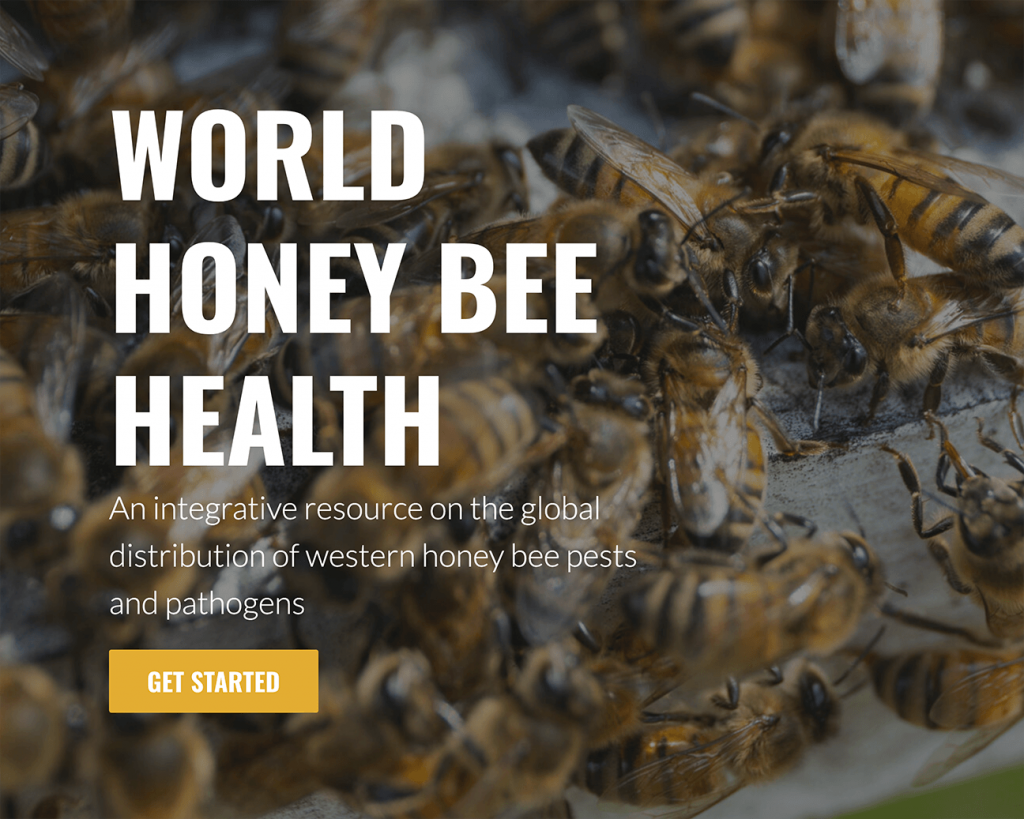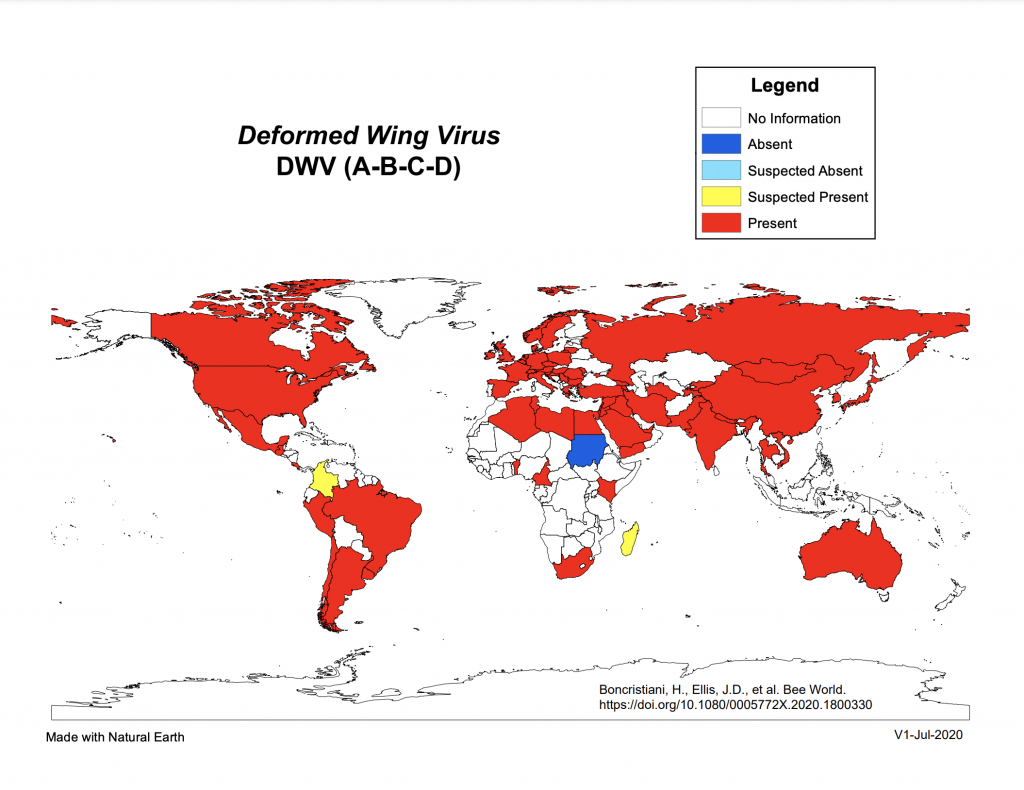The Honey Bee Research and Extension Laboratory at the University of Florida (HBREL) is announcing the completion of a website and manuscript update of the global distribution of western honey bee (Apis mellifera) pathogens and pests.

The health of managed colonies of honey bees is a topic of international concern given the importance of honey bees to crop pollination systems and the health of natural ecosystems. Honey bees host a suite of pests and pathogens, many of which can kill colonies outright. Knowing the global distribution of these pests and pathogens is key to developing strategies for their control and limiting their spread further.
Nicola Bradbear (1988) and Andrew Matheson (1993, 1995, 1996) were first to publish reviews of the global distribution of honey bee pests and pathogens. Several years later, their work was updated by Mark Allen and Brenda Ball (1996), who published information on virus incidence and world distribution. Jamie Ellis and Pamela Munn (2005) expanded, updated, and consolidated the earlier reviews.
Knowledge of honey bee health has changed dramatically since the last review was published in 2005. Therefore, an updated article about the global distribution of honey bee pest and pathogens was needed. To support this update, the author team developed a companion website (www.worldhoneybeehealth.com). The website is our attempt to keep information on the worldwide distribution of honey bee pests and pathogens updated in real-time.
Visitors can access distribution information quickly and download distribution maps and tables for the different pests and pathogens. Moreover, the website allows a rapid update of the distribution information. Whenever a new research article is published about the spread of a particular pest or pathogen into a new area, we can verify the scientific rigor of the report and update the distribution information on the website in real time. Learn more on how to participate in future updates HERE.
We hope this manuscript and corresponding website will make a significant contribution to the study of honey bee health globally. We especially hope that this website will be a valuable tool to scientists, regulators, industry officials, beekeepers, and bee enthusiasts.
To hear more about www.WorldHoneyBeeHealth.com, you can tune into Episode 39 of the UF IFAS Honey Bee Research and Extension Laboratory podcast, “Two Bees in a Podcast”.
This blog post was written by Dr. Humberto Boncristiani and revised by Dr. Jamie Ellis and Amy Vu
 0
0

